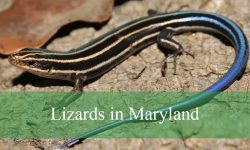We have been encountering spiders that look like ants when cleaning our basement rooms and parking slot every week. We thought they were common house ants until we consulted an entomologist in our neighborhood.
You might be someone wondering why do spiders mimic ants, it is a strategy to protect themselves from potential predators and also fools their prey. We wrote this article to share comprehensive insights about ant mimicry spiders.
Are Ant-Mimicking Spiders Poisonous?
Ant-mimicking spiders can bite though it is not dangerous to humans and pets. But if you are allergic to spider venom, you might experience nausea, itching, and breathing trouble.
The bites from these spiders are not painful for humans. Some people describe it as a welt feeling with a stinging sensation that looks like a mosquito bite.
We recommend people with severe allergies seek immediate medical attention from a professional. Some symptoms may pose body complications and compromise the immune.
Spiders That Look Like Ants (With Pictures)
Several spiders resemble ants in North America. Below is a list of spiders that look like ants in California:
Ant-Like Crab Spider
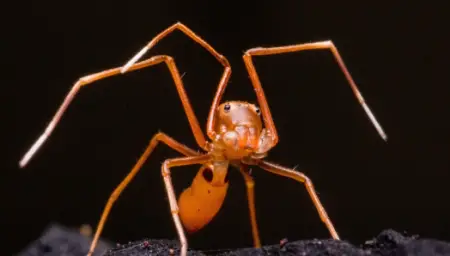
Ant-like crab spiders are native to the Amazon rainforest and some parts of North America. They have numerous evolved adaptations that make them resemble weaver ants.
They lift their front two legs in a waving motion that almost looks like antennae. The unique adaptation attracts the attention of the nearby prey and increases the chance of grabbing it.
The fake spots on the mouth anterior are other exciting features that resemble the eyes of a weaver ant. These spiders also walk sideways like crabs to confuse potential predators.
Male ant-like crab spiders look like carrying another ant in their mouth. The mimicry helps to fight predators and also impress females.
These spiders do not go after the prey instead they wait until it comes in front of them. They use the two front legs to grab their prey and inject venom.
The ant-like crab spiders live in trees and make homes near the nests of the weaver ants. The ability to jump is the feature that helps differentiate them from the model ants.
Red Weaver Ant-Mimicking Spider

It is a type of jumping spider with an elongated body that resembles the Asian weaver ant in behavior. But the red weaver ant-mimicking spider is timid and does not bite humans or pets.
The red weaver spiders have orange bodies with thin and narrow waists. The eye-like spots on the abdomen and raised front legs are distinctive features.
The venom from the spider is less powerful and cannot suppress the prey. They lay light webs and wait for the prey to fall on them since they do not hunt directly.
They live in trees and bushes near their model ant’s nests to get the ant-like smell for fooling predators and ambushing their prey.
Two-Banded Ant-Mimic Sac Spider
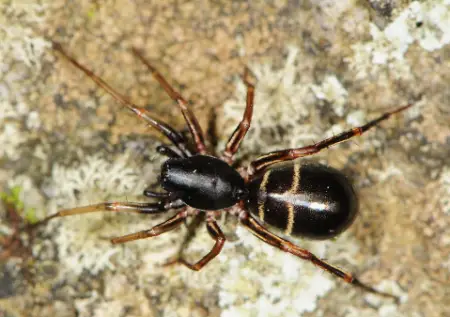
It is a minute spider species with a dark long body and thread-like waist. The two-banded ant-mimic sac spider does everything that looks like an ant.
This spider that looks like an ant in Texas is challenging to tell its differences from the ant unless viewed under a microscope. The two telltales’ extra legs are distinctive features.
The two light brown bands on their bodies are only visible when you come closer. They live in growing vegetation to hide from predators and ambush their prey.
Common Patterned Ant-Mimic Ground Spider
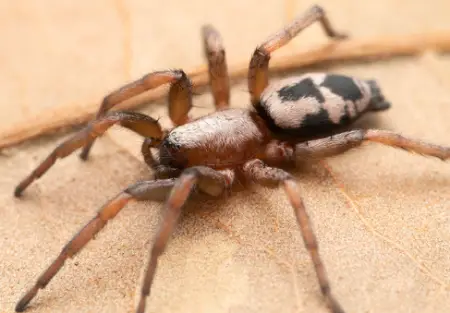
It is a brightly colored spider that mimics a velvet ant. But common patterned ant-mimic spiders are hairy and come in different colors.
These spiders live in woodland where they hide under tree bark and leaves. The strong stingers and mouthparts are ideal for disabling their prey.
The velvet ant mimic allows the spider to ward off potential predators in the wooded areas. It is also an effective strategy for hunting.
Orange Ant-Mimic Sac Spider
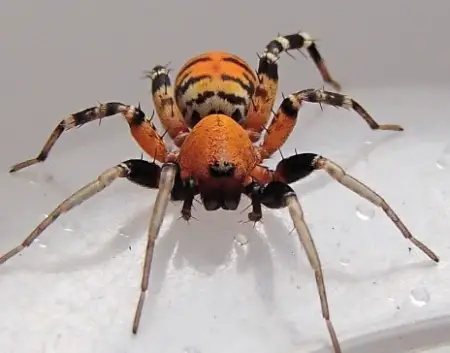
It is a bright orange-colored spider that resembles a velvet ant of the same color. These brightly colored ants are wingless but with powerful and painful stings.
Orange ant-mimic sac spider uses the velvet ant resemblance to send fear to their potential predators. These spiders are known for their powerful and venomous stingers.
Red-Spotted Ant-Mimic Sac Spider
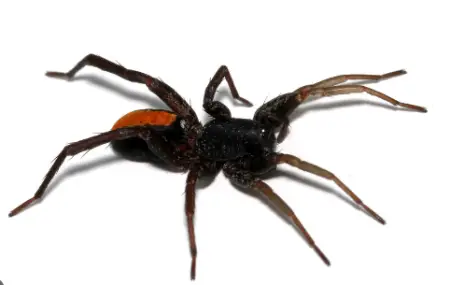
The red and black spider that looks like an ant usually confuses people with the black widow due to their close similarities. The hairless spider is non-aggressive to humans.
The spider species usually target insects, ants, and small pets. The bites from red-spotted ant-mimic sac spiders are painful and harmless to humans.
These spiders use six of eight legs to walk and raise the front pair-like antennae. The male species are smaller than their female counterparts.
Slender Ant-Mimic Jumping Spider
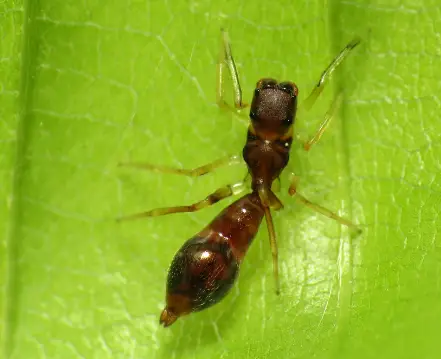
It is the only spider that looks like an ant in Texas due to its close physical similarities and appearance. The slender waist and three partitions in its body can fool potential predators.
They also lift their front pair of legs to mimic antennae. But these spiders are preyed on by the same ants they mimic. This does not deter them from building homes near the same ant’s nests.
These spiders build nests with a solid outer layer that prevents the ants from entering. Their bodies absorb the ant’s odor to keep them away from predators.
Mourning Ant-Mimic Spider
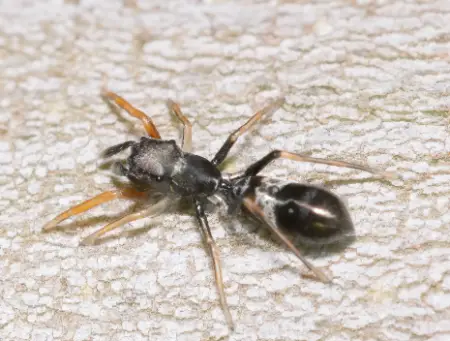
It is a type of jumping spider native to New South Wales and Australia. It has an elongated body that resembles an ant to deter predators.
The variegated markings on the abdomen and two large black spots could easily be mistaken for eyes by flying hunters. These spiders are aggressive to humans and excellent hunters.
Long-Palped Ant-Mimic Sac Spider
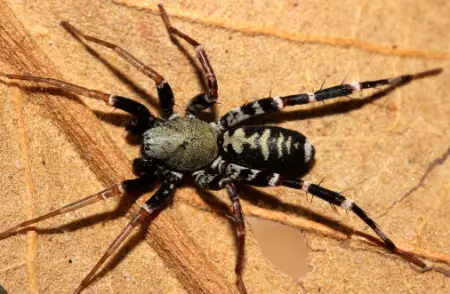
These spiders have close behavioral ant mimicry despite having a distinct appearance. They also look different according to their life stages and gender.
The black abdomen has four lateral grey or white stripes for easy identification. The head can be white, brown, or black depending on the sex and life stage.
Mature species have shaded two front leg pairs with black near the body and brown towards the end. The female spiders grow up to 13mm while males and juveniles are up to 3-6mm long.
Japanese Ant-Mimic Spider
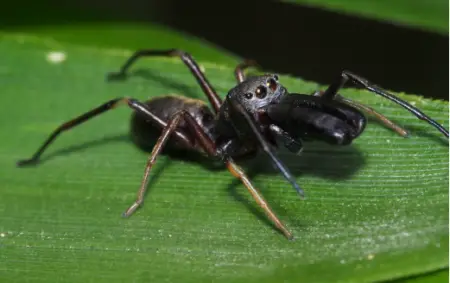
It is among the few spiders with a close ant appearance. The thorax makes the spider appear as if the body is divided into three parts.
The huge forward-facing eyes are a prominent feature of a jumping spider. They also have a binocular vision for location, stalking, and ambushing their prey.
Bicolor Ant-Mimic Jumping Spider

It is a vibrant jumping spider that does not closely look like an ant. But some of its physical features resemble an ant from a distance.
It might appear like an ant to predators viewing from the top. The spider can jump for a long distance and also hunt the ants.
The orange and black colors resemble that of a strobe ant. The spider can move quickly and produces an odor ideal for hunting ants.
Greater Ant-Mimic Spider
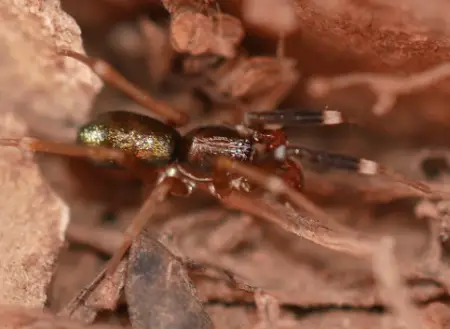
The spider is native to North America and it does not closely look like an ant. The greater anti-mimic Corinne spider has ant behavioral mimics for grabbing the prey.
The spider has a brown to metallic black color with a huge abdomen. It raises its first pair of legs to look like an antenna and walks randomly in search of a trail.
Variegated Ant-Mimic Sac Spider

It is a beautiful spider species hailing from North and Central America. The timid spider measures about 7-9mm long, whereas the females are somehow larger than the males.
They are not the best ant-mimicry species since they look more like spiders. The behavior and movement resemble that of an ant.
These spiders wave their front leg pairs like antennae and move in a zigzag. Besides that, they bob up and down their abdomens.
Myrmarachne Formicaria
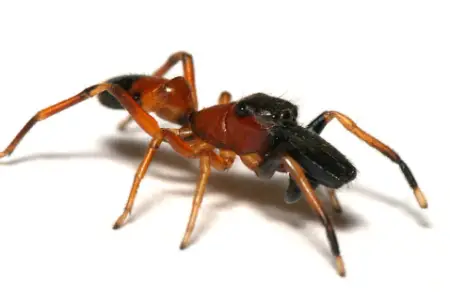
It is another jumping spider found in tropical areas with a close resemblance to wood ants. It walks in a zigzag pattern while raising its front leg pairs to look like antennae.
The brown-black colors are the distinctive features. These spiders are often seen in the summer and love to inhabit homes or open spaces like gardens.
My Final Thoughts
Ant-mimicking adaptations help spiders to hide from their potential predators and also create an effective strategy for ambushing their prey.
We hope this article helped in identifying spiders that look like ants within your home or open spaces like gardens. Feel free to share your experiences and pictures of such ants with us.
People Who Read This Also Read:





